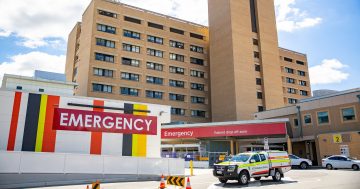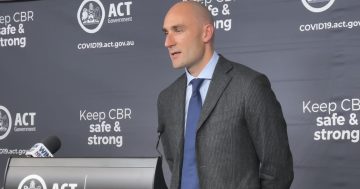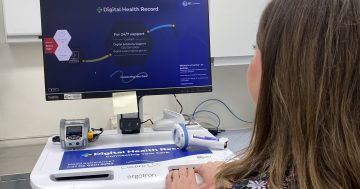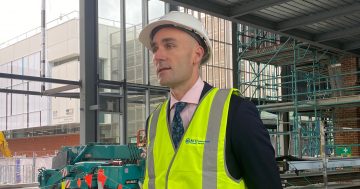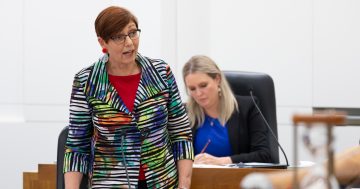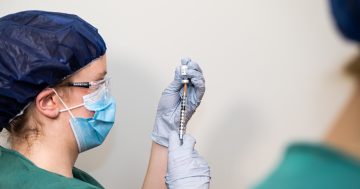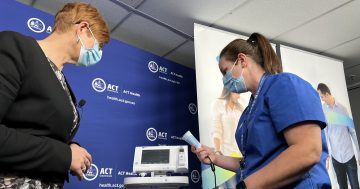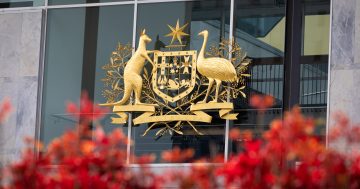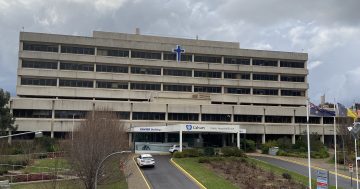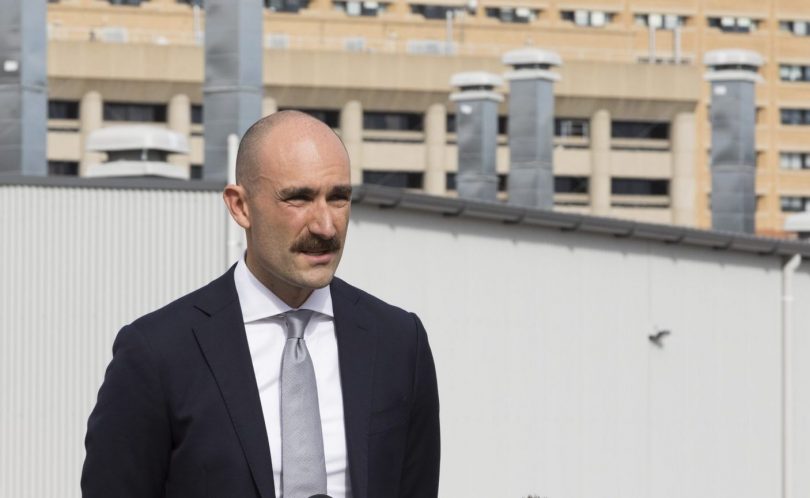
Modelling suggests the ACT could record between 28 and 95 cases by the end of this week, an email to staff from CHS CEO Dave Peffer said. Photo: Michelle Kroll.
Modelling provided to Canberra Health Services staff early this week predicts the ACT could see COVID-19 case numbers in the hundreds by the end of the week, and new daily cases between 28 and 95.
According to an email sent to staff and seen by Region Media, there are also concerns about significant shortages across the holiday season as staff take leave, travel interstate and the likelihood of positive infections being recorded among staff members.
In the email, Canberra Health Services CEO Dave Peffer expressed concerns that things could get a “little tricky in the week between Christmas and New Year because of the rise of Omicron, increased travel and staffing shortages”.
“We are having ongoing discussions and are ready to tackle this head-on,” Mr Peffer’s email read.
Despite data indicating ACT hospital occupancy for the next week will remain low, “the week after is entirely dependent on the number of cases we get during this week”.
There are currently 124 active cases of COVID-19 and three patients in ACT hospital’s with the virus – one is active and two are cleared cases.
The email to staff confirmed two recent COVID-19 exposures within the Canberra Health Services team.
The first – a team member working in the Specimen Reception Team in Pathology – was reported last week. The second was a team member who worked in the radiation therapy department at the Canberra Hospital.
They tested positive on Wednesday, 15 December, and were likely infectious at work on Tuesday, 14 December, and Wednesday, 15 December.
It’s unknown how many staff and patients were impacted by the two exposures but work is ongoing.
COVID-19 cases at the hospital and in health staff more broadly is a real concern, Minister for Health Rachel Stephen-Smith explained, as there isn’t an infinite supply of a trained workforce.
“The number of health staff who are exposed [to the virus] and required to isolate or quarantine is a concern,” Ms Stephen-Smith said. “That comes back to questions about how we manage our test, trace, isolate and quarantine system.
“We’ve seen that when exposure occurs within the hospital, for example, that thanks to the very stringent use of PPE and the infection control measures that are in place, the number of staff that need to be furloughed is incredibly low and those exposures are incredibly well-managed.”
However, the majority of staff aren’t at risk of being exposed at work.
“As case numbers increase, the majority of our staff are more likely to be exposed in the community.”
Health staff have not been asked to limit their movements in the community, Ms Stephen-Smith said, but they are generally displaying “absolute common sense when it comes to these matters”.
“Our concerns are around that capacity to continue to staff and backfill when we have people furloughed – both in our own health system and in aged care,” Ms Stephen-Smith said.
The ACT Health Minister said she has engaged in conversations with the Commonwealth about these issues given they also apply to aged care staff.
It’s also not just about a shortage of healthcare staff to care for seriously ill COVID-19 patients either, Ms Stephen-Smith explained. A COVID-19 case in a testing team can mean longer wait times at the already-busy testing centres and fewer vaccination appointments, as well as fewer people to manage the increasing numbers of close and casual contacts.
For a similar reason, authorities are resisting calls to increase testing capacity further.
“Our workforce is human as well. They are people with families who need to take a break over Christmas, too,” Ms Stephen-Smith said.
“My message to Canberrans is to think about the fact that every time we increase [testing] capacity, that’s someone else who needs to step into that role.”
The ACT has re-imposed the mask mandate and tightened visitor restrictions at residential aged care facilities in response to the rapidly-spreading Omicron variant, which now accounts for half of the ACT’s active cases and is likely to imminently become the dominant strain.












